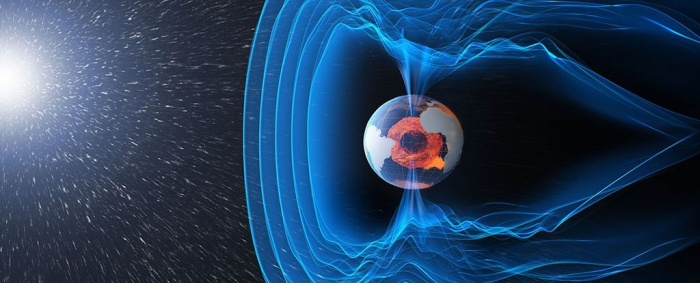It's a fact geologists know about our planet: every few hundred thousand years or so, Earth's magnetic field quite literally flips – so the magnetic north is at the South Pole, and vice versa. It's important to establish the timings of these reversals so we know how much of a window we have to potentially adapt for the next one.
With so many modern-day systems like GPS reliant on knowing north from south, a flip could easily cause chaos one day.
Earth's magnetic field is created by the planet's liquid iron outer core spinning around its solid inner core. Charting magnetic field reversals back through time isn't easy, but clues can be found in ocean sediments and lava flows that lock in the direction and the strength of the magnetic field at the time they emerged.
"Lava flows are ideal recorders of the magnetic field," says geologist Brad Singer, from the University of Wisconsin-Madison. "They have a lot of iron-bearing minerals, and when they cool, they lock in the direction of the field."
"But it's a spotty record. No volcanoes are erupting continuously. So we're relying on careful field work to identify the right records."
Singer and his colleagues looked at lava flow records from Chile, Tahiti, Hawaii, the Caribbean and the Canary Islands, looking at the timing of the most recent reversal. Named the Matuyama-Brunhes reversal after the scientists who discovered magnetic field flips, it happened about 770,000-780,000 years ago.
Researchers Rob Coe and Trevor Duarte at work in Haleakala National Park, Hawaii. (Brad Singer)
That timing suggest we're 'overdue' for a reversal right now – although we may just be in a period of instability that doesn't result in a full flip (something that's happened before, too).
There's currently some debate over how long the next reversal will last.
Based on the lava rock records, the researchers found that the main part of the Matuyama-Brunhes event lasted 4,000 years, but was preceded by 18,000 years of instability and excursions (those temporary, partial reversals).
The findings were backed up by an analysis of rocks from the ocean floor, a more continuous but less precise record of Earth's magnetic field.
This time frame is longer than previous estimates, and hints that we won't suddenly be surprised by a relatively quick flip.
We still don't know for sure how long the next flip might last – or exactly when it's coming – but we do now have a wealth of extra data to help scientists make their best estimations. If we're in for another Matuyama-Brunhes reversal, this study suggests it's going to last for many generations.
When the time does come, our planet's magnetic field is going to be weakerand more complicated than it is now, so it's vital that we're prepared.
"Reversals are generated in the deepest parts of Earth's interior, but the effects manifest themselves all the way through the Earth and especially at Earth's surface and in the atmosphere," says Singer.
"Unless you have a complete, accurate and high-resolution record of what a field reversal really is like at the surface of Earth, it's difficult to even discuss what the mechanics of generating a reversal are."
Science Advances
More about: #Earth
















































